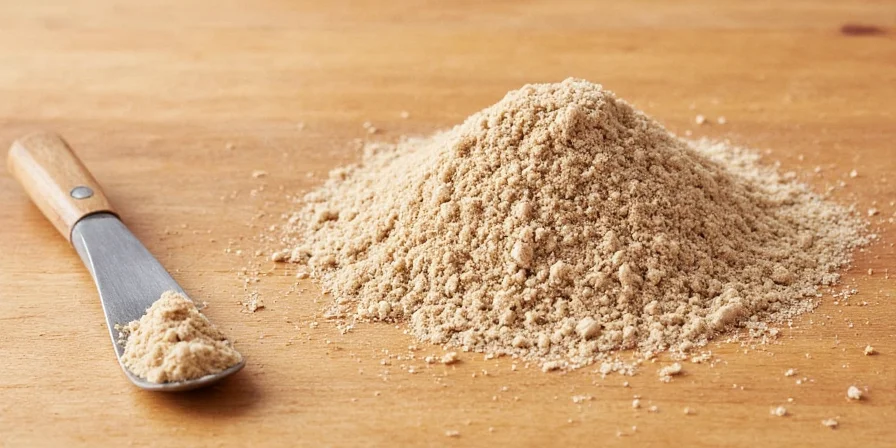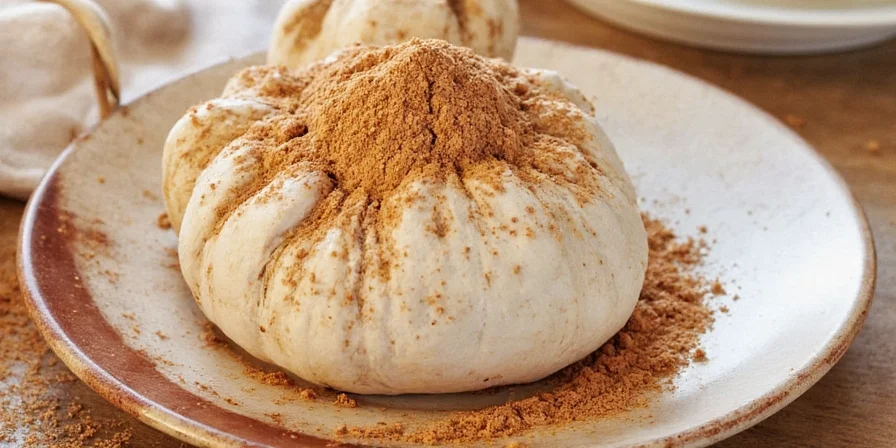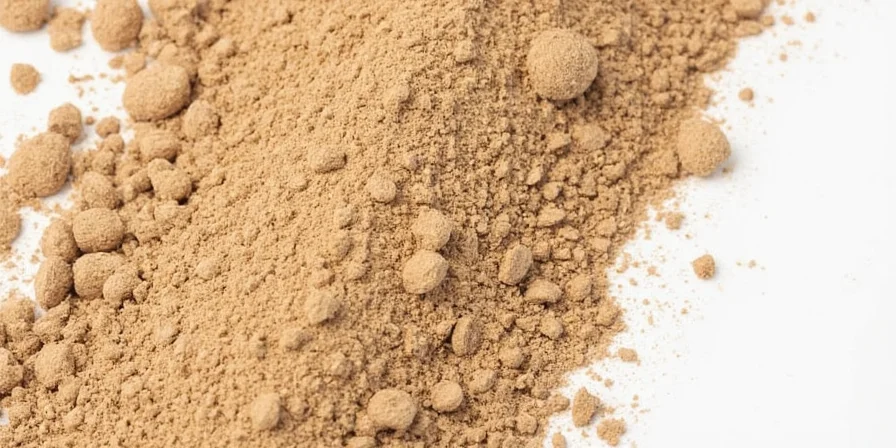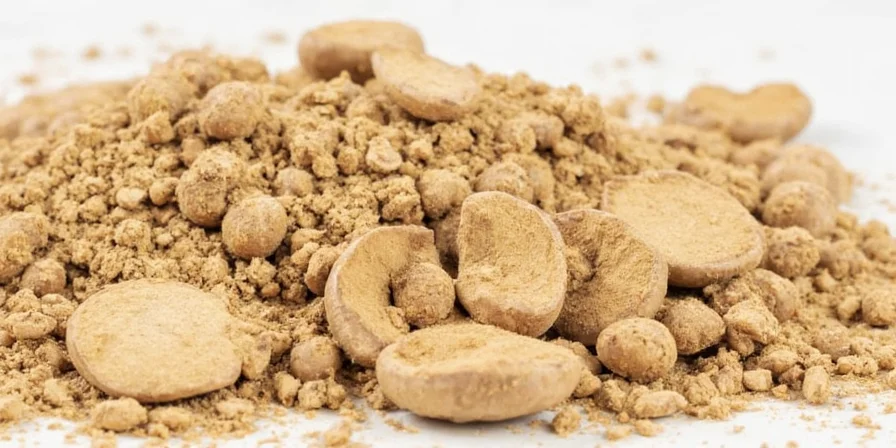Powdered shiitake mushroom is a concentrated umami seasoning made from dried shiitake mushrooms that delivers instant savory depth to dishes with minimal effort. Unlike liquid umami boosters, this shelf-stable powder contains 10x more guanylic acid than tomatoes, activating the fifth taste sensation without artificial additives. Home cooks gain restaurant-quality flavor in seconds - just 1/4 teaspoon transforms bland sauces, soups, and proteins. Vegan chefs particularly benefit as it solves the 'umami gap' in plant-based cooking where traditional meat stocks can't be used.
Table of Contents
- What Is Powdered Shiitake? (Simple Definition)
- 7 Proven Benefits You Can't Ignore
- How to Use Powdered Shiitake: 7 Practical Applications
- Shiitake Powder vs MSG, Miso & Other Umami Boosters
- The Science: Why It Works Better Than Fresh Mushrooms
- Make Your Own: Step-by-Step Guide
- Storage Secrets for Maximum Freshness
- FAQs: Answering Your Top Questions
What Is Powdered Shiitake? (Simple Definition)
Powdered shiitake is dehydrated dried shiitake mushrooms ground into a fine powder that concentrates natural glutamates and guanylates. This process creates a pure umami booster containing up to 10 times more flavor compounds than fresh mushrooms. Unlike liquid seasonings, it adds savory depth without altering texture or moisture content. One teaspoon equals approximately 8 fresh mushrooms in umami potency, making it the most efficient way to enhance dishes with minimal effort.
7 Proven Benefits You Can't Ignore
Shiitake powder solves specific culinary challenges that other seasonings can't address:
- Instant umami delivery: Activates savory receptors in 30 seconds vs. hours of simmering stocks
- Vegan-friendly depth: Creates meaty complexity in plant-based dishes where Worcestershire or fish sauce can't be used
- Sodium reduction: Achieves rich flavor with 60% less salt than soy sauce alternatives
- Time savings: Eliminates mushroom chopping and rehydration steps for busy cooks
- Consistent results: Professional chefs use it for flavor standardization in high-volume cooking
- Waste reduction: Uses dried mushrooms which have 12-month shelf life vs. fresh (7 days)
- Dietary flexibility: Naturally gluten-free, keto-friendly, and paleo compliant
How to Use Powdered Shiitake: 7 Practical Applications
Maximize flavor impact with these chef-approved techniques:
- Revolutionize meat rubs – Blend 1 tsp powder with 2 tsp smoked paprika and 1 tsp garlic powder per pound of protein
- Instant sauce enhancement – Whisk 1/2 tsp into canned tomato sauce or store-bought gravy
- Breakfast upgrade – Mix 1/4 tsp into scrambled eggs or avocado toast seasoning
- Grain perfection – Stir 1/4 tsp per cup into rice, quinoa, or couscous during cooking
- Dressing rescue – Fix bland vinaigrettes with a pinch (1/16 tsp) of shiitake powder
- Vegan 'Parmesan' – Combine 2 tbsp nutritional yeast with 1 tbsp shiitake powder and 1 tsp garlic powder
- Soup secret weapon – Add 1/2 tsp to miso soup or vegetable broth (stir in after boiling)

Shiitake Powder vs MSG, Miso & Other Umami Boosters
| Umami Booster | Umami Intensity | Best Applications | Key Advantages | Limitations |
|---|---|---|---|---|
| Powdered Shiitake | ★★★★☆ | All-purpose seasoning | Natural, vegan, no sodium, shelf-stable | Slight mushroom aftertaste |
| MSG | ★★★★★ | General flavor enhancement | Pure umami, fast-acting | Controversial, not natural |
| Miso Paste | ★★★☆☆ | Dressings, marinades | Probiotics, complex flavor | Requires refrigeration, high sodium |
| Nutritional Yeast | ★★☆☆☆ | Vegan cheese substitutes | B-vitamins, cheesy flavor | Strong taste, not pure umami |
| Anchovy Paste | ★★★★☆ | Pasta, Caesar dressing | Intense savory flavor | Not vegan, fishy smell |

The Science: Why It Works Better Than Fresh Mushrooms
Drying triggers enzymatic hydrolysis that breaks down proteins into free glutamates and guanylates. This natural process creates synergistic umami where glutamate + guanylate = 8x stronger savory perception than either compound alone. Fresh mushrooms contain 90% water that dilutes these compounds, while drying concentrates them by eliminating moisture. Japanese dashi masters have leveraged this science for centuries - dried shiitake produces broth with 10x more umami compounds than fresh. Unlike MSG which is isolated glutamate, shiitake powder provides naturally balanced flavor compounds validated by flavor research at the University of California's Department of Food Science.
Make Your Own: Step-by-Step Guide
Commercial powders lose potency during shipping. Homemade version preserves volatile aromatics with these critical steps:
- Select mature dried shiitakes – Choose caps with visible white spore patterns (indicates peak umami development)
- Pre-toast at 175°F (80°C) – 45 minutes to activate enzymes without burning volatile compounds
- Grind in cooled batches – Use 15-second pulses in dedicated coffee grinder (prevents heat buildup)
- Sift for consistency – Discard fibrous stems using 100-mesh sieve for smooth texture
- Vacuum seal immediately – Prevents oxidation that causes bitterness within weeks

Storage Secrets for Maximum Freshness
Preserve potency with these science-backed techniques:
- Oxygen-free storage: Use mason jars with oxygen absorbers (not just airtight lids)
- Freeze for longevity: Extends peak flavor from 6 to 18 months without texture changes
- Avoid refrigeration: Temperature fluctuations cause moisture absorption and clumping
- Test potency: Rub between fingers – strong earthy aroma indicates freshness (bitterness = oxidation)
- Buy in small batches: Commercial powder loses 30% potency within 3 months of opening
FAQs: Answering Your Top Questions
How much shiitake powder equals one fresh mushroom?
One teaspoon of powder equals approximately 8 fresh shiitake mushrooms in umami potency. For recipe substitution, use 1/4 teaspoon powder per medium fresh mushroom called for in recipes.
Can I substitute shiitake powder for MSG?
Yes, at a 2:1 ratio (use 1/4 tsp shiitake powder for every 1/8 tsp MSG). It provides comparable umami with added earthy complexity and no health concerns associated with processed MSG.
Does it work in sweet applications?
Surprisingly yes – a pinch (1/16 tsp per serving) enhances chocolate desserts and caramel by balancing sweetness through umami's flavor-modifying properties. Avoid exceeding this amount to prevent earthy flavors.
Why can't I use fresh mushrooms to make powder?
Fresh mushrooms contain 90% water. Drying concentrates umami compounds by eliminating moisture that dilutes flavor. Fresh versions also mold quickly when powdered due to residual moisture, creating safety hazards.











 浙公网安备
33010002000092号
浙公网安备
33010002000092号 浙B2-20120091-4
浙B2-20120091-4